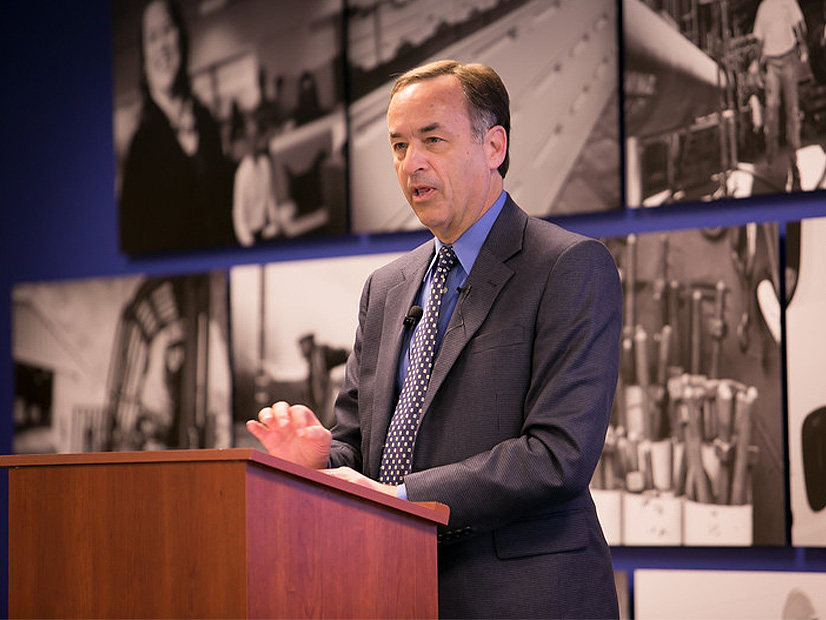
Some of the staunchest in-state opponents of California’s past efforts to “regionalize” CAISO have shifted their views on the issue.
The change of heart comes as participants in the West-Wide Governance Pathways Initiative work to build the framework for an independent Western RTO expressly designed to include — and use the capabilities of — the ISO.
Previous attempts to expand CAISO into a broader regional organized electricity market have been met with strong opposition both inside and outside California.
For electricity sector stakeholders in the rest of the West, the ISO’s lack of independent governance — its board is appointed by the governor of California — has long been a non-starter for deeper integration.
To address the governance problem, California supporters of CAISO regionalization attempted three times to advance state legislation for an independent ISO board. Three times they failed in the face of in-state opposition.
In 2016, then-Gov. Jerry Brown (D), a key supporter of an expanded and independently governed CAISO, halted the first such effort before a final bill could be crafted, citing the need to give state agencies more time to put together a politically acceptable proposal. (See Governor Delays CAISO Regionalization Effort.) But that pause yielded little progress, and AB 813, a bill to convert CAISO into a multistate entity, died in committee at the end of both the 2017 and 2018 legislative sessions in the face of opposition from a handful of key constituencies.
The reasons for resisting that bill varied.
For the International Brotherhood of Electrical Workers (IBEW) labor union, the change would expand the boundaries of the CAISO balancing authority area in a way that could mean that the portion of projects that California’s renewable portfolio standard required to be interconnected directly to the ISO’s BAA could be built outside the state, reducing job opportunities for members.
The California chapter of the Sierra Club worried that an RTO binding CAISO with PacifiCorp, a six-state utility with a large coal generation portfolio, would water down the impact of California’s environmental policies pushing for renewable generation.
Groups such as the California Municipal Utilities Association (CMUA) and consumer advocacy group The Utility Reform Network (TURN) warned about the potential effect on consumer rates and the ISO’s mission to serve the interests of Californians.
But sentiments among previous opponents appear to be shifting as the Pathways Initiative, launched last summer by a group of utility commissioners from five states, works to build an independently governed RTO on the foundation of CAISO’s real-time Western Energy Imbalance Market (WEIM) and Extended Day-Ahead Market (EDAM). RTO Insider reached out to representatives of those groups to learn more about how and why their views have changed.
‘Fair and Balanced’
Marc Joseph, an IBEW representative who sits on the Pathways Initiative’s Launch Committee, spoke about labor’s opposition to AB 813 during a Dec. 15 update from the committee.
“We opposed the prior legislation because it would have resulted in exporting thousands of jobs building new generation and transmission created by California’s RPS [Renewables Portfolio Standard] law from California to other states,” Joseph said.
But the initiative’s approach to the governance issue has led the union to reconsider its position.
“The key substantive difference between the prior legislation and the current options is under all the current options the CAISO’s balancing authority function would remain intact,” Joseph said. “We’re supporting the Pathways Initiative because, like everyone else here, we’re acting in our own rational self-interest.”
In an interview with RTO Insider, Joseph again emphasized that regionalizing without expanding the physical boundaries of CAISO’s BA would keep jobs in California and benefit ratepayers.
“We do see potential benefits in optimizing dispatch of plants over a wider footprint, and that will produce cost savings to consumers and therefore free up money to do the other things we need to do, such as building out the distribution grid,” he said. “The question now is, how do we get more entities to participate in EDAM? That’s why the Pathways Initiative exists.”
Like IBEW, CMUA also opposed prior legislation, largely due to iterations of the bill that it said could have had adverse impacts on consumers. But CMUA Executive Director Barry Moline said the agency was never against regionalization.
“Our concern with it was the way governance was established (who gets to serve on and advise the board),” Moline told RTO Insider in an email. “There was very little direction, and we worked hard to — and this is important — make sure consumers were not harmed in the process. By harm, we mean that we are concerned about affordability, and without any controls or accountability on governance, our imperative to address affordability would not be of concern.”
Like other industry stakeholders, CMUA was also concerned over what it thought was a rushed timeline to transform CAISO into an RTO. (See Governance Plan Critics Urge Slowdown of Western RTO Development.)
But the Pathways Initiative takes an incremental approach, providing participants the opportunity to ease into an integrated market that could turn into an RTO with time.
“With the experience and trust built through the WEIM, we are working through the Pathways Initiative to build the EDAM governance model and the process to make it work,” Moline said. “We believe that done correctly, with significant and continuous stakeholder input, we will continue to build trust and provide consumer and environmental benefits. It is this stepwise process that is creating trust among participants, and we are eager to continue to develop it with maximum stakeholder engagement.”
Environmental concerns also played role in the failure of AB 813, despite getting support from prominent conservation groups such as the Natural Resources Defense Council, Environmental Defense Fund and Western Resource Advocates, who all viewed regionalization as a way to share renewable resources across a wider geography in order to reduce electricity-based emissions across the West.
But California’s chapter of the Sierra Club had voiced concern that an expanded CAISO would reduce the effectiveness of the state rules to eliminate the import of coal-fired generation, especially given that PacifiCorp was one of first utilities to signal its intent to join an expanded ISO. Additionally, the group was concerned that AB 813 eliminated emissions tracking as a core principle, which could lead to carbon leakage.
But the WEIM now has a rigorous GHG accounting in place, a program that will be extended to the EDAM. And since its launch in 2014, the WEIM has also been responsible for avoiding more than 904,000 metric tons of GHG emissions through reduced curtailment of renewables, according to CAISO estimates.
That record of reductions may account for why the Sierra Club appeared to move its attention away from the most recent efforts to regionalize CAISO just as the process begins to heat up again. When reached for comment, the group said it was unable to find a staff member who could speak to the issue.
TURN did not respond to a request for comment for this story, but Moline addressed past environmental and ratepayer concerns, saying “WEIM is providing great value to consumers and the environment.”
He also voiced optimism about the Pathways Initiative.
“It’s highly engaging and requires a lot of time from everyone impacted by a coordinated Western energy market. We see it as a smart, can-do group of stakeholders who are working hard on a fair and balanced path forward,” he said.
Robert Mullin contributed to this article.
